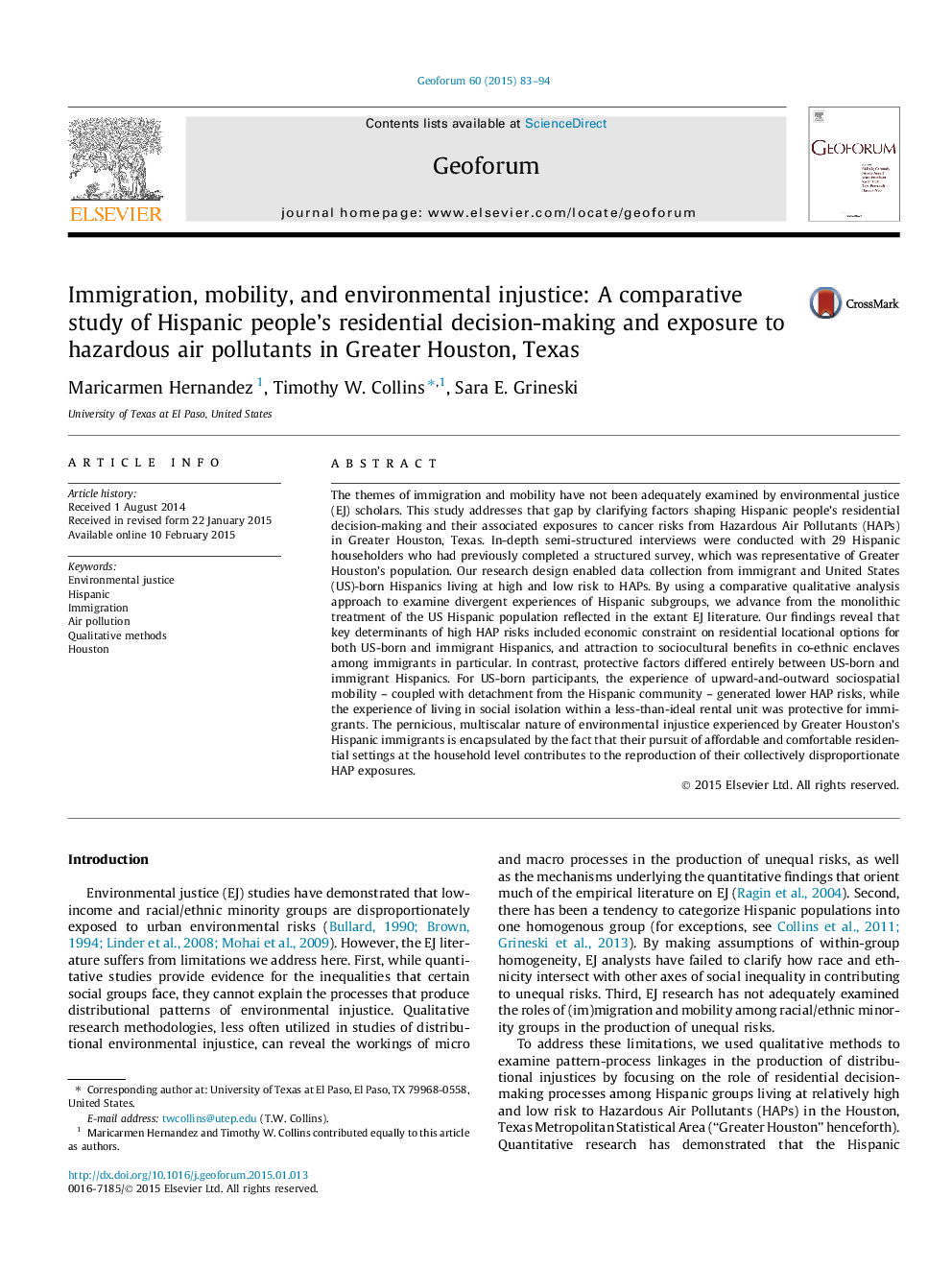| Article ID | Journal | Published Year | Pages | File Type |
|---|---|---|---|---|
| 5073724 | Geoforum | 2015 | 12 Pages |
â¢Immigration and mobility have been underemphasized in environmental justice studies.â¢Economic constraints on residential choices put Hispanics at risk to air pollutants.â¢Attraction to sociocultural benefits in Hispanic enclaves puts immigrants at risk.â¢Gains in sociospatial mobility lead to lower risks for US-born Hispanics.â¢Environmental injustices faced by Hispanic immigrants are multiscalar in origin.
The themes of immigration and mobility have not been adequately examined by environmental justice (EJ) scholars. This study addresses that gap by clarifying factors shaping Hispanic people's residential decision-making and their associated exposures to cancer risks from Hazardous Air Pollutants (HAPs) in Greater Houston, Texas. In-depth semi-structured interviews were conducted with 29 Hispanic householders who had previously completed a structured survey, which was representative of Greater Houston's population. Our research design enabled data collection from immigrant and United States (US)-born Hispanics living at high and low risk to HAPs. By using a comparative qualitative analysis approach to examine divergent experiences of Hispanic subgroups, we advance from the monolithic treatment of the US Hispanic population reflected in the extant EJ literature. Our findings reveal that key determinants of high HAP risks included economic constraint on residential locational options for both US-born and immigrant Hispanics, and attraction to sociocultural benefits in co-ethnic enclaves among immigrants in particular. In contrast, protective factors differed entirely between US-born and immigrant Hispanics. For US-born participants, the experience of upward-and-outward sociospatial mobility - coupled with detachment from the Hispanic community - generated lower HAP risks, while the experience of living in social isolation within a less-than-ideal rental unit was protective for immigrants. The pernicious, multiscalar nature of environmental injustice experienced by Greater Houston's Hispanic immigrants is encapsulated by the fact that their pursuit of affordable and comfortable residential settings at the household level contributes to the reproduction of their collectively disproportionate HAP exposures.
